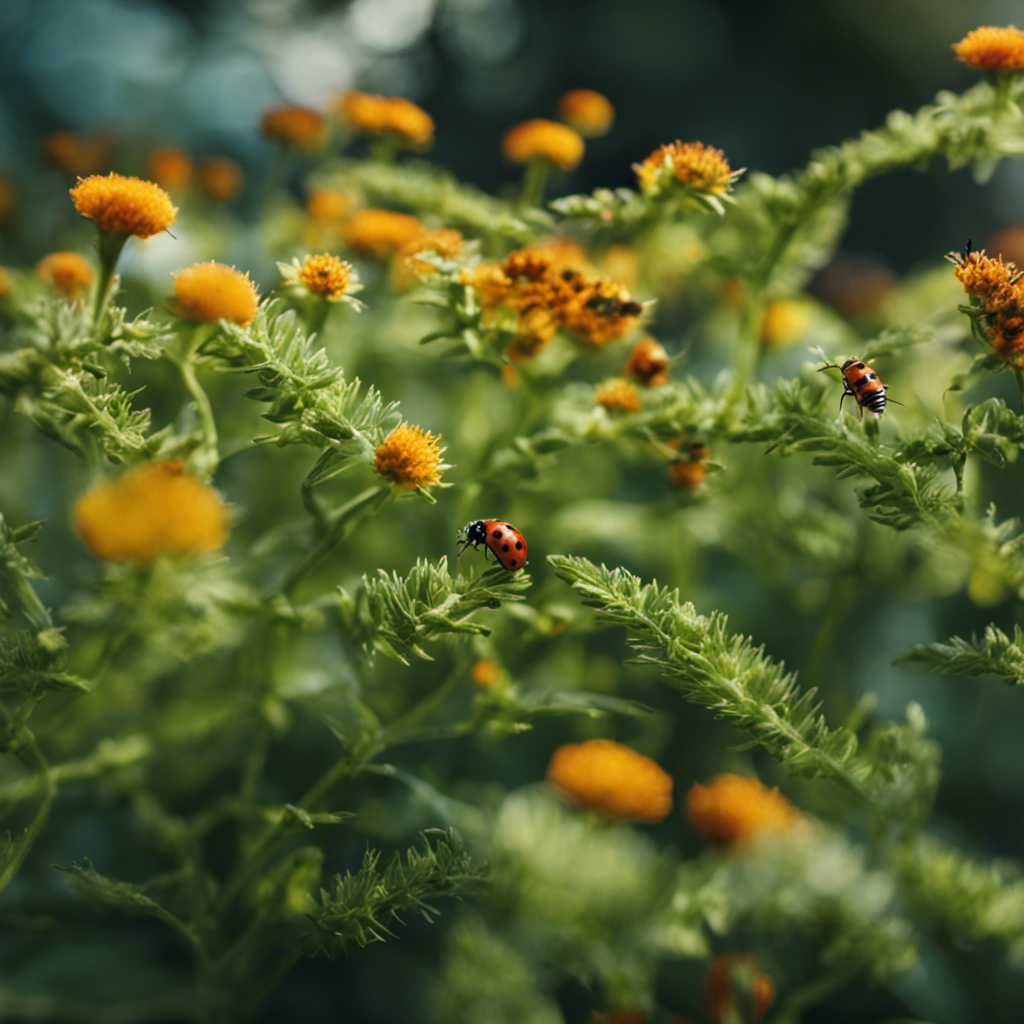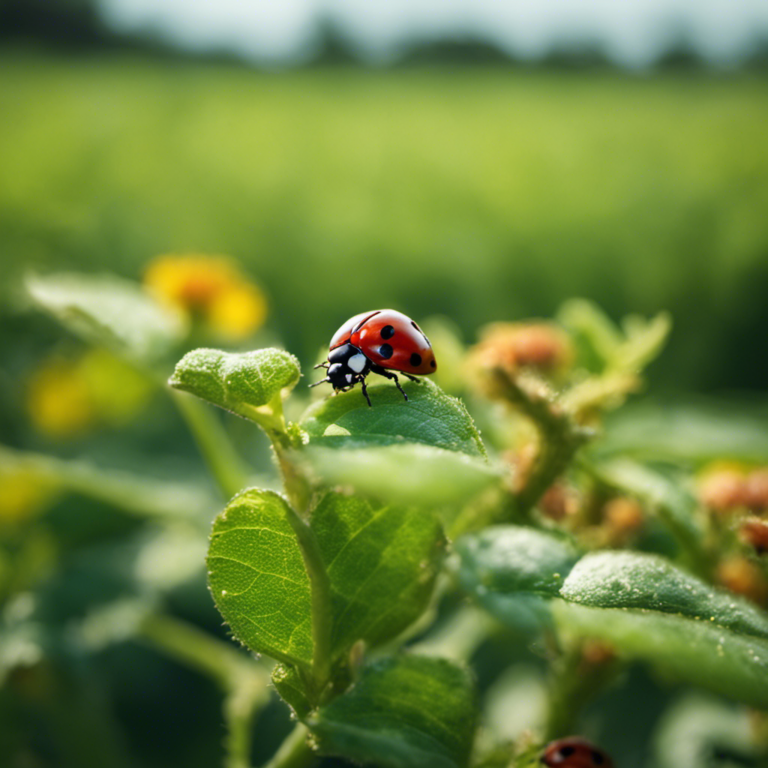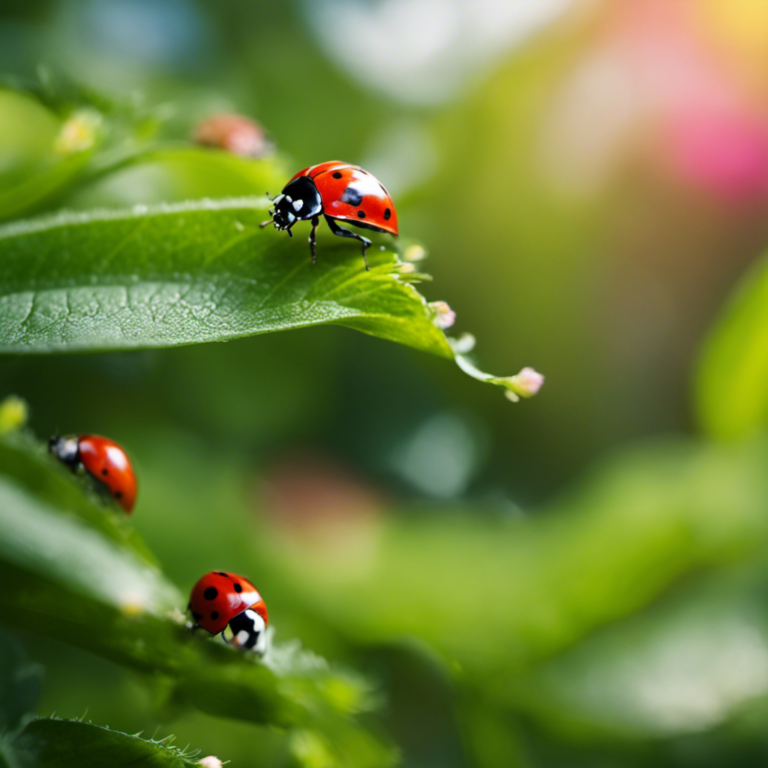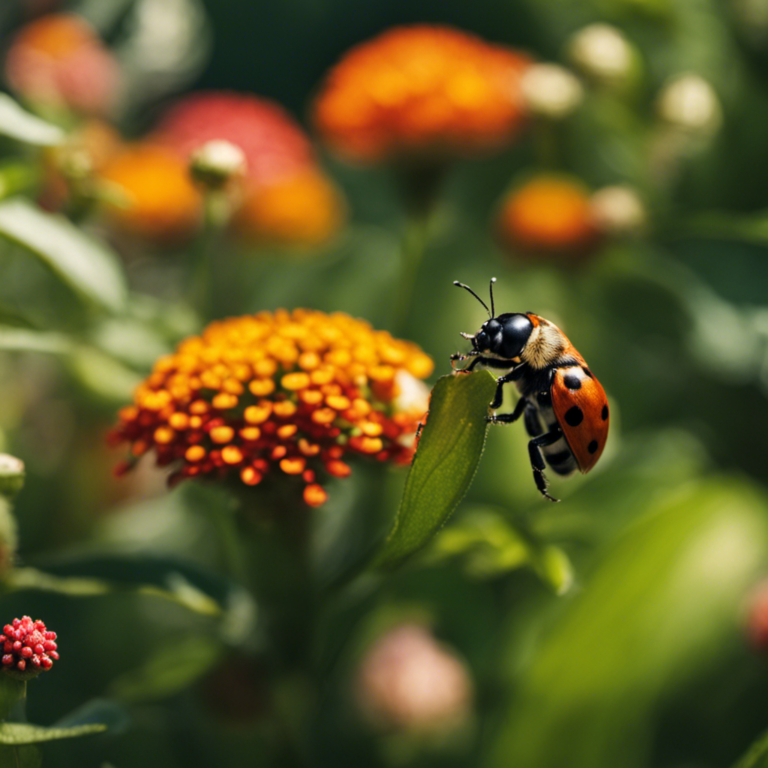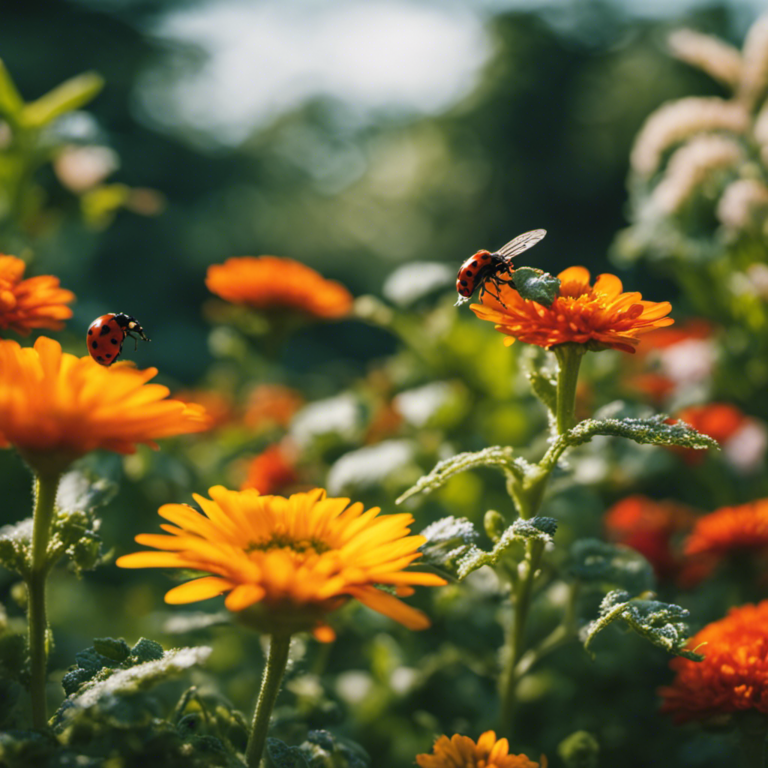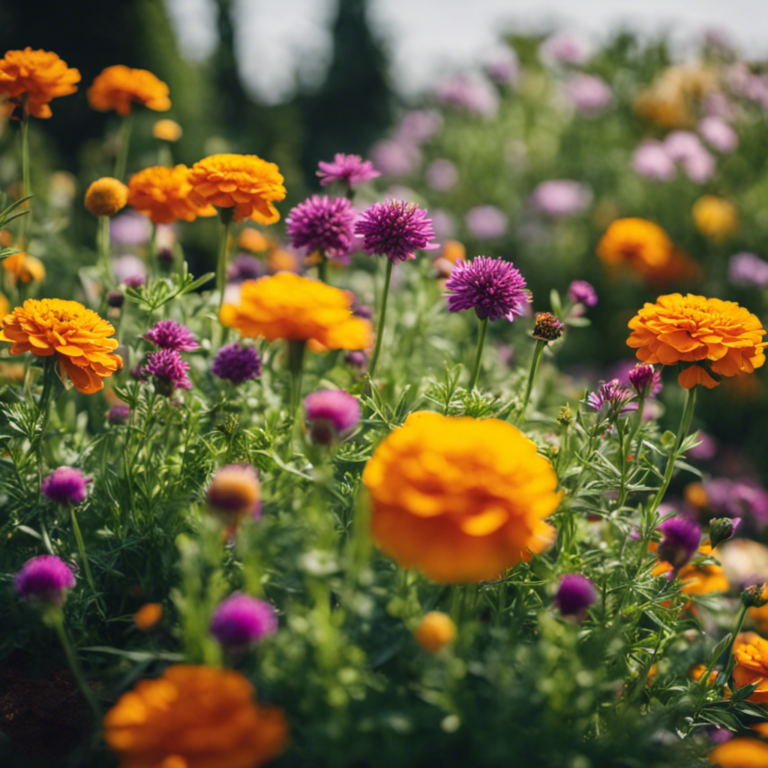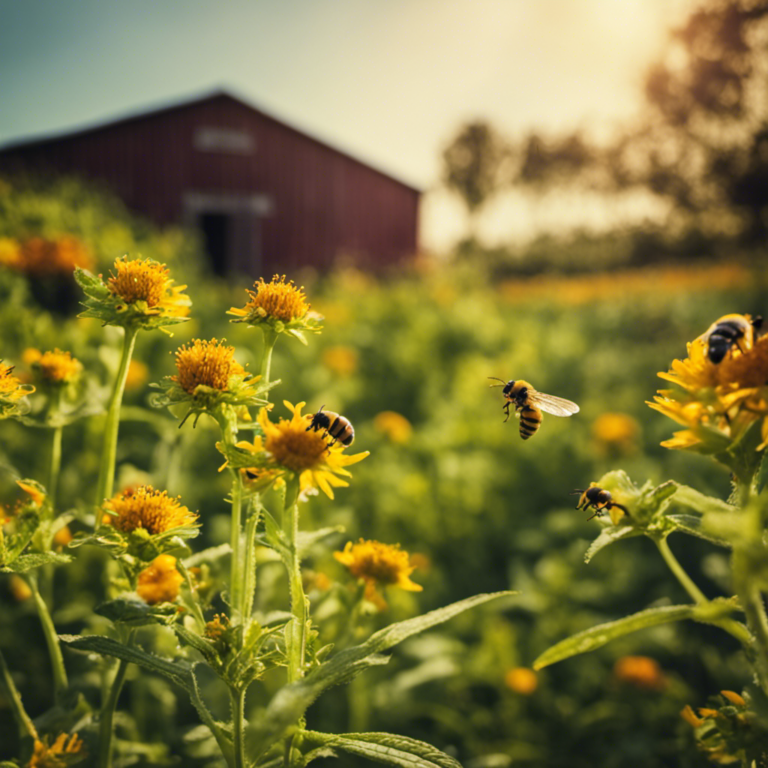Are pests wreaking havoc on your garden? Don’t worry! You can fight back using the power of herbs.
In this article, we’ll show you how to effectively deal with pests in an eco-friendly manner. Discover natural repellents, beneficial insects, homemade pest sprays, companion planting, and physical barriers that will help your plants thrive.
Say goodbye to harmful chemical warfare and embrace a sustainable approach that benefits both you and the environment.
It’s time to reclaim your garden and become an eco-warrior.
Key Takeaways
The battle between herbs and bugs presents a sustainable solution for environmentally-conscious gardeners. They have discovered effective methods to protect their plants without causing harm to the ecosystem. By utilizing natural repellents, beneficial insects, homemade pest sprays, companion planting, and physical barriers, gardeners have developed a harmonious and eco-friendly approach to gardening that aligns with nature.
These green techniques highlight the success of herbs in repelling bugs, with scientific knowledge and data-driven strategies as their foundation. It is important to embrace these methods and appreciate the victory of nature-friendly gardening.
Natural Repellents
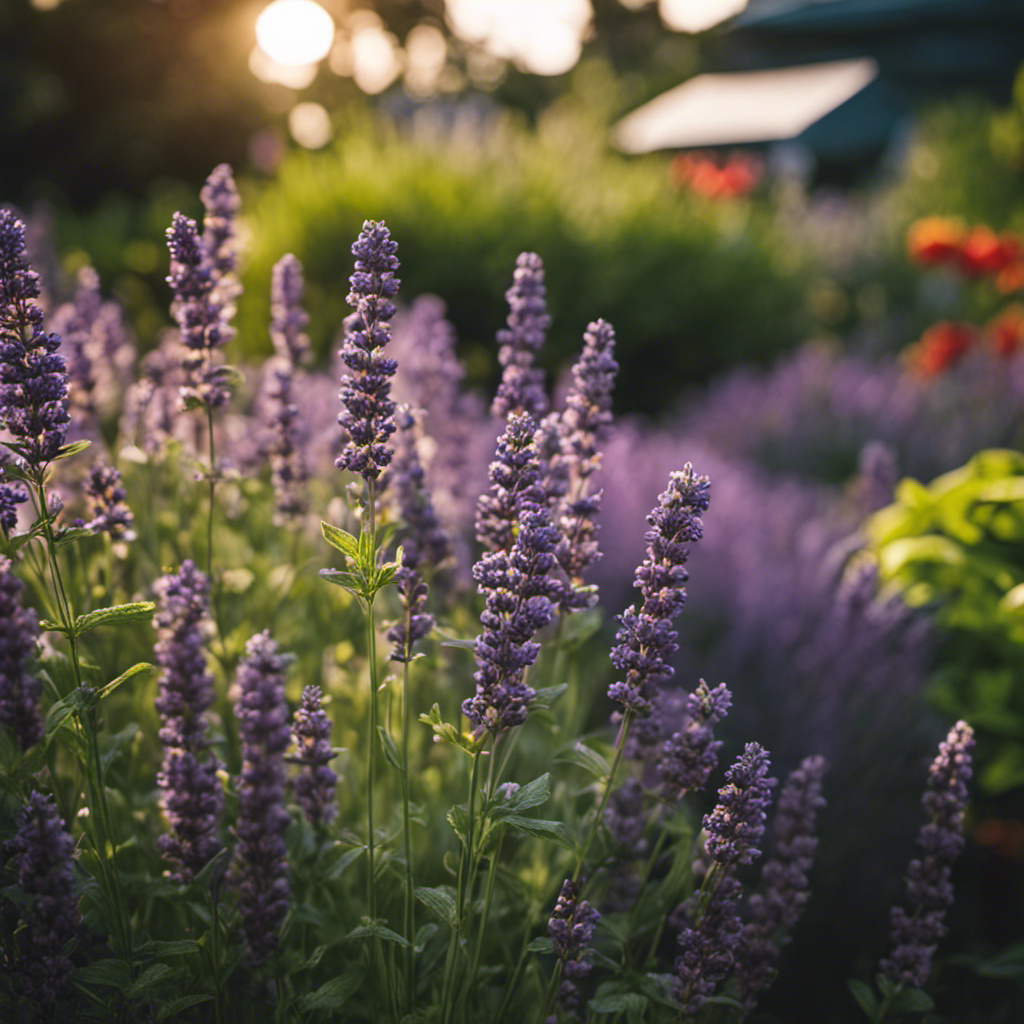
Using natural repellents is a great way to keep bugs away without resorting to harsh chemicals. For centuries, herbal remedies and essential oils have been used as effective alternatives to traditional insect repellents. These natural solutions not only serve the purpose of keeping bugs at bay but also offer additional benefits such as being eco-friendly and safe for humans and pets.
Research has shown that certain herbs like lavender, peppermint, and citronella have properties that repel insects. By diluting essential oils extracted from these herbs with water or carrier oils, you can create your own bug repellents. For example, a mixture of lavender oil and water can be sprayed onto your skin or clothing to keep mosquitoes away.
These natural repellents provide a healthier and more sustainable approach to bug control, making them a viable option for those seeking an alternative to chemical-based products.
Beneficial Insects
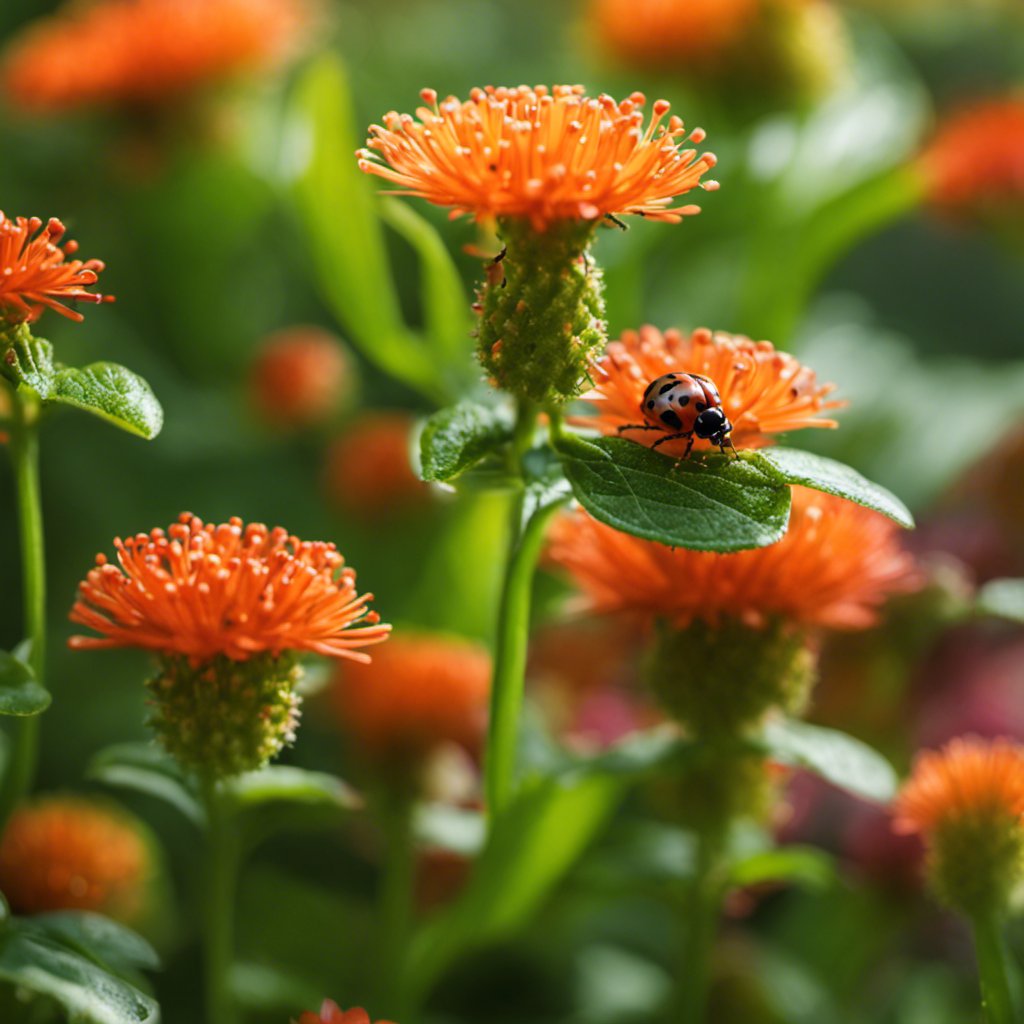
To improve your eco-friendly approach to controlling bugs, consider using beneficial insects.
Beneficial insects are natural predators of pests and can effectively reduce their population without the need for chemical pesticides. Some examples of beneficial insects include ladybugs, lacewings, and parasitic wasps. These insects prey on common garden pests like aphids, caterpillars, and mites.
There are several ways to introduce beneficial insects into your garden.
One method is to plant a variety of flowers and herbs that attract these helpful insects. Another option is to purchase beneficial insects and release them into your garden. Organic farming techniques, such as companion planting and crop rotation, can also create a favorable environment for beneficial insects to thrive.
Homemade Pest Sprays

Making your own homemade pest sprays is a great way to control bugs in an eco-friendly manner. Instead of relying on chemical pesticides, you can use essential oil blends and vinegar solutions as effective alternatives.
Essential oils like peppermint, eucalyptus, and lavender contain natural compounds that repel insects such as mosquitoes, ants, and flies. Simply mix a few drops of these oils with water in a spray bottle and apply it around windows, doors, and other entry points to deter pests.
Vinegar solutions are also effective in eliminating pests like spiders and ants. By mixing equal parts of vinegar and water in a spray bottle, you can create a solution that can be used to wipe down surfaces or spray directly on insects. The strong odor of vinegar disrupts their scent trails, preventing them from finding their way into your home.
Homemade pest sprays offer a natural and eco-friendly approach to pest control while minimizing the use of harmful chemicals. By using these homemade remedies, you can effectively keep pests at bay while being mindful of the environment.
Companion Planting
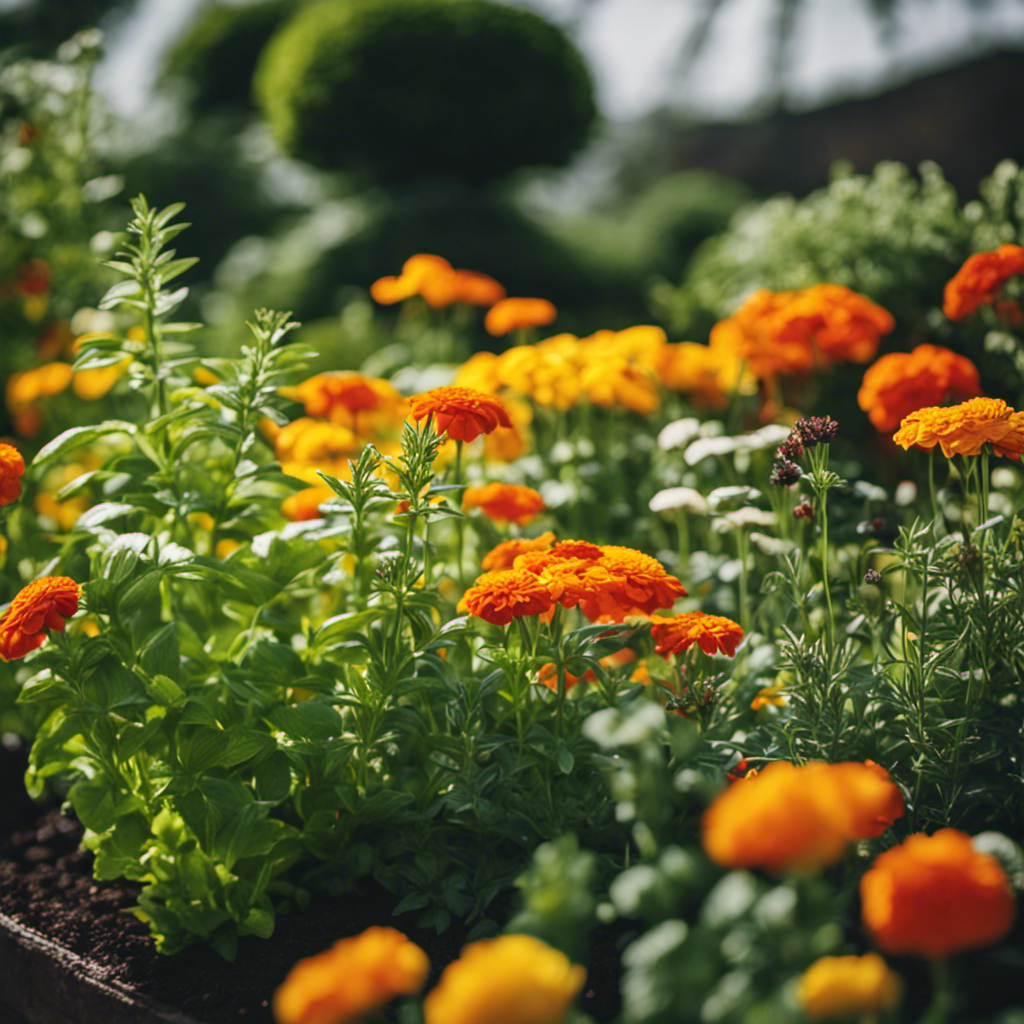
To continue our discussion from the previous section, let’s explore the practice of companion planting as a way to enhance your eco-friendly pest control efforts.
Companion planting involves strategically growing certain plants together to maximize their benefits and discourage pests. Here are three key aspects of companion planting:
-
Plant compatibility: Some plants naturally repel pests or attract beneficial insects. For instance, marigolds emit a scent that repels common garden pests while attracting pollinators like bees. By planting marigolds alongside your vegetables, you can naturally protect them from pests.
-
Crop rotation: Rotating your crops each season can disrupt pest life cycles and reduce the risk of infestation. By planting different crops in different areas of your garden throughout the year, you minimize the build-up of pests that target specific plants.
-
Attracting beneficial insects: Certain plants, such as dill and fennel, serve as habitats and food sources for beneficial insects like ladybugs and lacewings. These insects prey on garden pests and help maintain the health and pest-free environment of your plants.
Physical Barriers
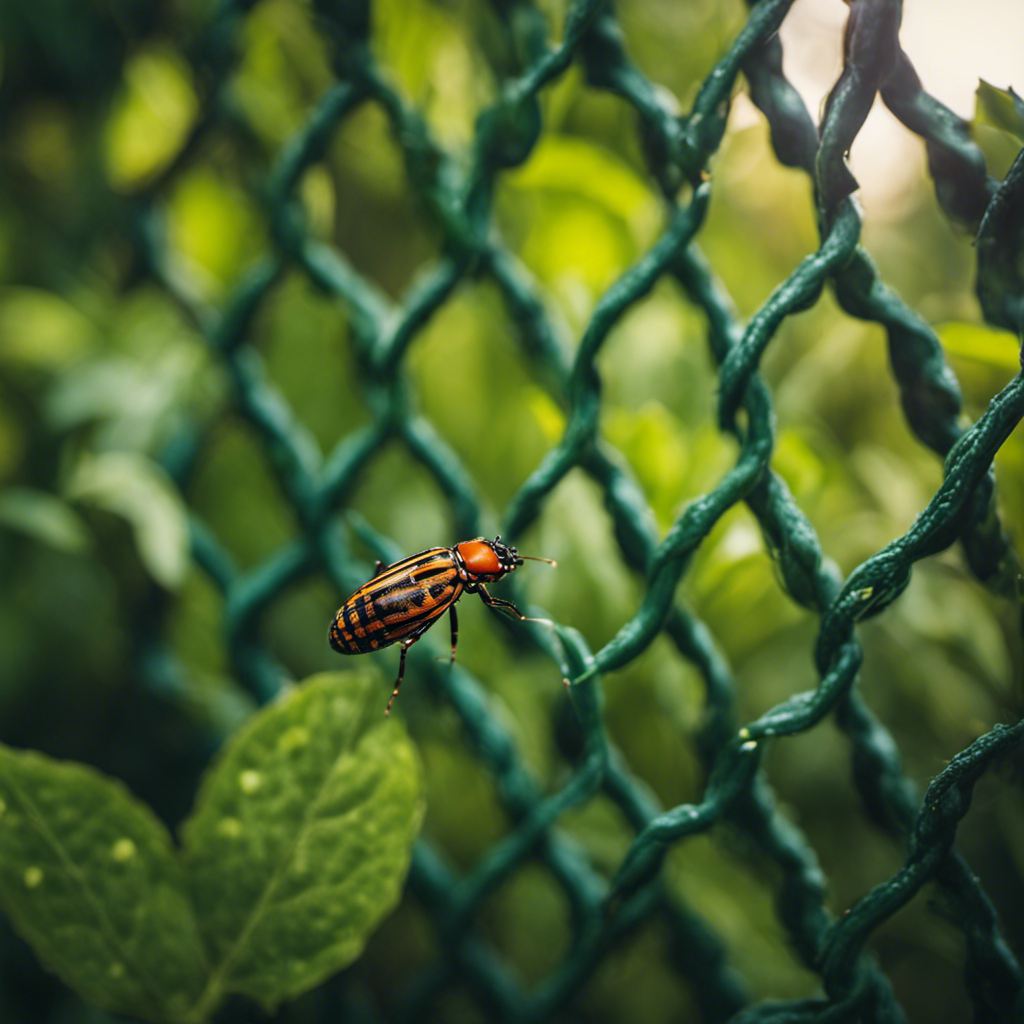
Enhance your eco-friendly pest control efforts by incorporating the use of physical barriers.
Physical barriers are an effective method of organic pest control that can be integrated into a holistic pest management strategy. These barriers act as obstacles, preventing pests from accessing your plants.
For instance, you can install fences or netting around your garden to keep out larger pests like rabbits and deer. Additionally, using row covers can protect plants from insect pests.
These barriers not only provide physical protection but also create a microclimate that’s unfavorable for pests.
Conclusion
The battle between herbs and bugs offers an eco-friendly solution.
Gardeners have discovered effective ways to protect their plants without harming the environment. By using natural repellents, beneficial insects, homemade pest sprays, companion planting, and physical barriers, they’ve created a harmonious symphony of sustainable gardening practices that work in harmony with nature.
These green methods celebrate the triumph of herbs over bugs, achieved through scientific knowledge and data-driven strategies.
Let’s embrace these techniques and appreciate the victory of nature-friendly gardening.
